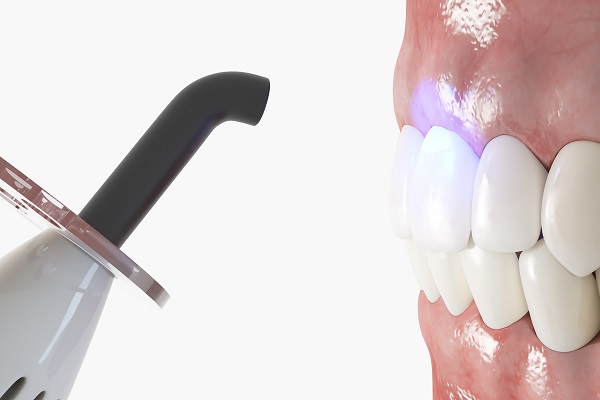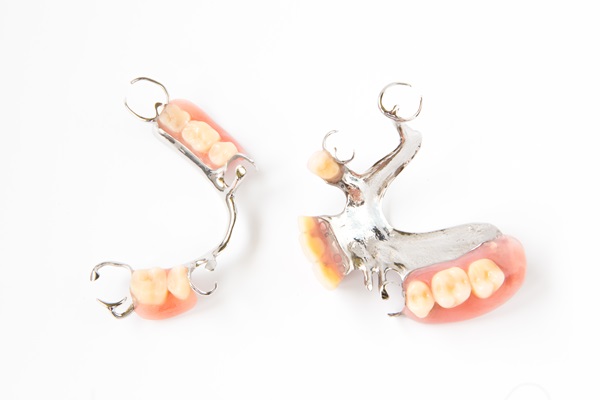Is Dental Bonding a Cosmetic Dental Procedure?

A dental bonding procedure is a treatment that involves applying tooth-colored resin and using a special light to harden it. It is primarily a cosmetic procedure but may also be used to treat some dental conditions.
Dental bonding
Many dentists use dental bonding for small cosmetic alterations, short-term corrections of cosmetic issues, and repairing teeth in areas with low-bite pressure. The treatment is fairly versatile and can be used to treat a variety of issues with beautiful results. The procedure is low-key and comes with its own unique set of pros and cons.
Uses for dental bonding
Dental bonding may be done for one of several reasons:
- Serve as an alternative to amalgam fillings for cavities
- Repair cracked, decayed, or chipped teeth
- Improve the look of discolored teeth
- Give teeth a longer appearance
- Close spaces between teeth
- Protect tooth roots exposed by receding gums
- Change the shape of teeth
Dental bonding procedure
Some bonding procedures do not require much preparation. If the tooth shape needs to be altered, the dentist may need to drill the tooth before performing the bonding procedure. The dentist begins the procedure by roughening the surface of the tooth and applying a conditioning liquid. The dentist then applies, molds, and smooths a putty-like resin that is shaded to match the patient's natural teeth. A bright blue or laser light is used to harden the bonding material. After the material hardens, the dentist shapes, trims, and polishes it to match the adjacent teeth. Most procedures take between 30 and 60 minutes to complete.
Advantages of dental bonding
The procedure is short, minimally invasive, and relatively inexpensive. Unlike other treatment options, the entire process can be completed in one visit to the office. Less tooth enamel must be removed for this procedure than for veneers or crowns, which means there is less discomfort overall. Bonding helps the teeth look whiter and more evenly shaped or sized. Many patients are pleased with the results and feel more confident in their smiles after this type of treatment.
Disadvantages of dental bonding
The material used for dental bonding stains more easily than the material used in dental crowns and veneers. Patients will need to take extra care to avoid foods that can easily stain teeth and dental work, including:
- Tea
- Coffee
- Red wine
- Soy sauce
- Berries
- Curry
- Beets
- Artificially colored beverages
Smoking will also cause staining and should be avoided completely, both for cosmetic and health purposes.
The bonding material is not as durable as the material used for crowns, fillings, or veneers and may chip or break. This is especially true for patients who have a habit of chewing on foreign objects or clenching and grinding their teeth. Steps should be taken to break these habits before the dental bonding procedure. Otherwise, damage is very likely.
The materials used usually do not last as long as the materials for other cosmetic procedures and may need to be replaced more frequently. Consuming alcohol on a regular basis or using mouthwash that contains alcohol can weaken these materials even more rapidly. A lack of routine dental care can also shorten the lifespan of the treatment.
Caring for bonded teeth
Patients should avoid biting fingernails, chewing on ice, pens, and hard foods, or using bonded teeth to tear open packaging. Maintaining proper oral hygiene by brushing at least twice per day, rinsing with an antiseptic mouthwash, flossing, and seeing a dentist for regular checkups may extend the life of bonded teeth.
The bonding material is not as strong as natural teeth, so patients should avoid biting down too hard. Additionally, mouthguards should be used during contact sports. While they are not permanent and require intentional care on the patient's part, most dental bonding procedures can last around 10 years before needing to be replaced or touched up. Those with less quality home care can expect to need additional treatment in as little as three years.
Conclusion
Dentists may recommend dental bonding as a treatment for minor cosmetic issues or to make minor repairs to damaged teeth. The procedure is less expensive and invasive than many of the alternative procedures, but the bonding material may be damaged more easily and require more frequent repairs or replacements. A dental professional can help patients weigh the advantages and disadvantages before selecting a treatment option. For many people, it is an attractive and durable choice, especially with excellent home care.
Request an appointment here: https://sandimassedation.com or call San Dimas Family and Sedation Dentistry at (909) 305-2300 for an appointment in our San Dimas office.
Check out what others are saying about our dental services on Yelp: Dental Bonding in San Dimas, CA.
Recent Posts
Dental bonding is a reversible dental procedure that involves using a composite resin material to rebuild and restore teeth. The composites used can be matched with the color of the patient’s teeth, allowing restorations made with them to blend in.Dental bonding has cosmetic and restorative uses in dentistry. Unlike other popular restorations dentists use, its…
Dental bonding is a common procedure in which the dentist uses a tooth-colored material called resin to fill in gaps and repair cracked or chipped teeth. Though bonding is a safe, low-maintenance procedure, it is not appropriate for all teeth or all patients who need a tooth repaired. When performed correctly, this option is a…
Dental bonding is a common dental service that many dentists offer right in their offices. What exactly does dental bonding involve? Bonding, also known as tooth veneers, involves applying a special resin to the front of your teeth to make them look whiter and brighter. Your dentist will take an impression of your teeth during…
Dental bonding is a procedure that restores the look and shape of a damaged tooth and protects it from future damage. As we stated, one of the key features of this procedure is that it can match the natural color of your teeth so that you don't have to worry about crowns or bridgework making…


